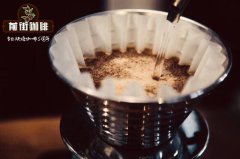What do you recommend for Kenyan coffee beans? Kenya aa grading is quality assurance.

Professional coffee knowledge exchange more coffee bean information please follow the coffee workshop (Wechat official account cafe_style)
Qianjie-Kenyan Coffee introduction
Usually Kenyan coffee is classified as follows:
1) Common categories:
Hand-picked coffee fruit, picked by hand, picked out immature fruit (unripe), overripe fruit (overripe) and other defects, peeled, after about 36 hours of fermentation, placed on a metal grid for sun drying, in the processing plant to remove the seed shell (parchment), become a blue-green appearance of attractive Kenyan raw beans.
These beautiful raw beans are graded according to particle size (size), shape (shape) and weight (weight):
E:kenya E, elephant beans, above elephant bean,18 (including round beans)
Round beans containing large grains, like PB, are small in quantity.
AA:Kenya AA,17-18 mesh
AB:Kenya AB,15-16, which is a mixture of An and B.
Grade An above 17 mesh (6.8mm), grade B above 16 mesh (6.3mm)
Light beans selected by TT:AA and AB by airflow separator
Over PB:Kenya PB,15, round beans and peaberry account for about 10% of Kenyan coffee.
CRV 12-14 mesh and PB light bean screened by air flow separator
Under 12 eyes, there are more defective beans, chopped beans and light beans.
HE: beyond the above level becomes HE (Hulled Ears)
2) the raw beans without official standard grading are UG (ungrade).
E,AA,AB,PB → UG1
C,TT,T,HE → UG2
3) MBUNI (sun beans, non-washing treatment)
All raw beans are sorted by gravity (gravity separator)
MH:heavy mbuni, heavy beans, yellow, free of black beans, fragments, dried fruit or other defects
The cup test shows a typical sun flavor with no taste defects.
ML:light mbuni yellowish green, with a small amount of worm-eaten beans or black beans, no stinky beans or fragments
There is no earthy or other bad taste in the cup test.
Knowledge: coffee roasting is a process that produces Mena reaction and caramel reaction inside raw beans, producing more wonderful flavors.
In short: Qianjie is a coffee research hall, happy to share the knowledge about coffee with you, we share unreservedly just to make more friends fall in love with coffee, and there will be three low-discount coffee activities every month. The reason is that Qianjie wants to make more friends drink the best coffee at the lowest price, which has been Qianjie's tenet for 6 years!
END
Important Notice :
前街咖啡 FrontStreet Coffee has moved to new addredd:
FrontStreet Coffee Address: 315,Donghua East Road,GuangZhou
Tel:020 38364473
- Prev

Which brand of African Kenyan coffee beans is the best Kenyan coffee grade collection
Professional coffee knowledge exchange more coffee bean information please follow the coffee workshop (Wechat official account cafe_style) front street-Kenya coffee introduction Kenyan coffee mostly grows in the altitude of 1500Murray 2100m, harvest twice a year, to ensure that only ripe berries are picked, people
- Next

Which brand of coffee in Kenya tastes good? Kenyan aa coffee beans are the best, I said.
Professional coffee knowledge exchange more coffee bean information please follow the coffee workshop (Wechat official account cafe_style) front street-Kenya coffee introduces the best coffee grade is bean berry coffee (PB), followed by AA++, AA+, AA, AB and so on. The fine coffee is shiny, delicious and slightly alcoholic. Have a wonderful, satisfactory aroma, balance
Related
- Beginners will see the "Coffee pull flower" guide!
- What is the difference between ice blog purified milk and ordinary milk coffee?
- Why is the Philippines the largest producer of crops in Liberia?
- For coffee extraction, should the fine powder be retained?
- How does extracted espresso fill pressed powder? How much strength does it take to press the powder?
- How to make jasmine cold extract coffee? Is the jasmine + latte good?
- Will this little toy really make the coffee taste better? How does Lily Drip affect coffee extraction?
- Will the action of slapping the filter cup also affect coffee extraction?
- What's the difference between powder-to-water ratio and powder-to-liquid ratio?
- What is the Ethiopian local species? What does it have to do with Heirloom native species?

